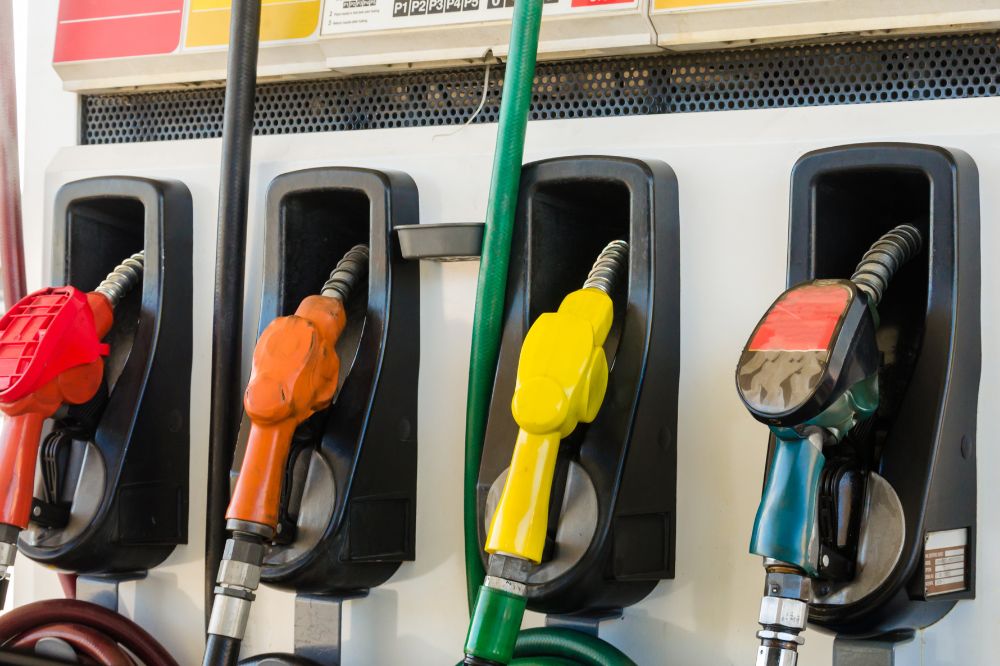
Are you concerned about the rise in diesel fuel prices and looking for fuel-efficiency strategies to cut costs? You’re not alone.
The new truck emissions regulations plus rising fuel costs have many fleet operators and independent truckers looking to increase their semi-truck’s fuel efficiency. Increased fuel efficiency helps you reduce emissions to the environment and save fuel. It can make a big difference in your business operations and profit margins.
Below, you’ll find 17 simple fuel efficiency strategies you can implement to improve your semi-truck fuel economy and reduce your fuel costs.
The Importance of Semi-Truck Fuel Efficiency
Semi-truck fuel efficiency is crucial for three primary reasons:
-
Environmental Impact
The transport sector is the largest source of greenhouse gas emissions in the U.S. It generates about 29% of the total greenhouse gas emissions, and the trucking industry accounts for nearly 23% of the 29%. By increasing your semi-truck fuel efficiency, you use less fuel for longer.
-
Compliance With Environmental Regulations
Increasing your semi-truck fuel efficiency helps you comply with all federal and state regulations on greenhouse gas emissions. You also stay aligned with the latest zero-emission goals for the trucking industry.
-
Higher Profit Margins
Improving fuel efficiency reduces your semi-truck’s fuel consumption. You’ll spend less on fuel and save money. These savings add up and can increase your profit margins in the long run.

Average Semi Truck Miles Per Gallon
An average semi-truck gets approximately 6 – 8 miles per gallon (mpg). The low fuel economy of most heavy-duty vehicles is because of their weight. The heavier your semi-truck is, the less fuel-efficient it will be unless you actively take action to increase fuel efficiency.
Semi-truck fuel efficiency isn’t constant. It may vary depending on many factors, such as:
- The model of the truck. Newer semi-truck models have advanced technologies, like low-rolling resistance tires and an aerodynamic design, to optimize engine performance and improve fuel economy.
- How you drive: Aggressive driving habits like speeding and hard braking burn more fuel and decrease fuel efficiency compared to safe driving habits, like moving at a safe speed.
- The weight of cargo: Semi-trucks hauling heavy cargo have a lower fuel economy than trucks hauling lighter goods.
How to Manage Semi-Truck Fuel Efficiency
Fuel efficiency strategies that work focus on controlling truck drivers’ actions and vehicle maintenance. Some include:
Inspect Vehicle Before Trips
Inspect your vehicle and fix any damage before your trip. Damages to your truck’s body, such as a bent front bumper, low body skirting, and missing or loose parts on your truck’s exterior, can all affect the vehicle’s aerodynamic design. The less aerodynamic your semi-truck is, the higher your fuel consumption and the lower your fuel economy.
Plan your trip
Trip planning helps you optimize your routes, identifying the most effective way to deliver cargo in the shortest time possible. You’ll know where to fuel up, stop for breaks, or park for the night. You can also tell where road constructions are in advance and find the best way to navigate such situations without increasing fuel usage.
When planning your trips, avoid mountainous terrain because steep grades often decrease semi-truck fuel efficiency.

Avoid Overfilling Tank
Getting a full tank right up to capacity leads to fuel wastage. Fuel expands when hot. When you over-fuel, it’s likely to seep out the sides as you drive. Fuel spillage is a sign of low fuel efficiency. It’s also dangerous for other motorists.
Use Low Rolling Resistance Tires
Low rolling resistance tires designed for semi-trucks need less energy to move. Using the right tires helps you reduce the fuel you use and increase your fuel economy.
Check Tire Pressure
Maintaining your tires in good condition also helps maximize fuel efficiency and save money. Check your tire pressure regularly to ensure they’re well-inflated. Your fuel usage increases by 1.5% if your wheels are underinflated by ten pounds for every square inch (PSI). On the other hand, inflating your tires well saves you about $0.11 per gallon.
Check Tire Alignment
Misalignment between your front and rear axles creates higher rolling resistance, which increases fuel usage and tire wear. Regularly checking your tire alignment ensures you handle misalignment issues early and use fuel efficiently.
Slow Down
Every increase in driving speed consumes more diesel. For example, driving above 75 mph consumes approximately 27% more fuel than driving at 65mph.
Maintain a constant speed to ensure your fuel consumption remains consistent. Stay in one gear while sticking to the speed limit as long as possible. The fuel economy of trucks reduces by 0.1 MPG for each mph you drive above 55 mph.

Brake Wisely
Many drivers use various braking methods to reduce the number of unnecessary complete stops, especially at stoplights and stop signs. This helps you avoid restarting your vehicle often. It takes more fuel to restart your truck whenever you come to a complete stop.
Use Your Momentum
Driving a heavy-duty vehicle generates momentum even if you travel at constant speed. By strategically using momentum to coast through certain situations, such as approaching stop lights or slowing down when going downhill, you can reduce the need for heavy braking. Using your momentum helps you use your brakes sparingly, which reduces fuel usage.
Use Cruise Control
For better fuel economy, use cruise control whenever you get an opportunity to do so. Cruise control helps you move at a constant, safe average speed throughout, using enough fuel. It prevents excessive acceleration and braking, which lowers the fuel economy of trucks.
Manage Cruise RPM
RPM, your truck’s revolutions per minute, measures engine speed. Semi-trucks use more fuel at higher engine speeds and less at lower speeds. Monitor your truck’s RPM to keep the figure within the range recommended by the manufacturer. Slower speeds and lower RPM will reduce your fuel costs.
Avoid Idling
Most truck drivers leave their semi-trucks idling when running quick errands. Others leave their trucks idle to stabilize the temperature on a hot or chilly day. But this behavior wastes fuel. You lose a gallon of gas in an hour of idling. Always turn off your truck when you have to leave it.
Avoid heavy traffic
Heavy traffic contributes to idling, which, as mentioned above, wastes fuel. Consider paying attention to real-time traffic updates to recognize congestion-prone routes ahead of time and work around them to avoid getting caught up in traffic and idling.

Keep load height low
A low cargo height reduces wind resistance, so your truck moves smoothly with less fuel. This helps you save fuel costs. Keeping your load height low and evenly distributed also improves fuel efficiency by improving your semi-truck aerodynamics.
Invest in Aerodynamics
There are several technological advancements and add-ons you can invest in to make your truck more fuel-efficient. A few add-ons to improve aerodynamics and get you more miles per gallon include:
- Truck Wings – close the gap between your cab and trailer, reducing drag
- Side extenders
- Roof fairings
- Trailer skirts
- Deep angled bumpers
Adopt Electronically Controlled Transmissions
Automated manual transmissions are a new technology that helps increase fuel mileage and improve fuel economy. An automated manual transmission (AMT) makes driving smoother and less tiring, leading to increased driver safety and better performance.
Most trucking companies are switching to automatic transmissions to improve driver retention and increase fuel efficiency.
Regular Preventative Maintenance
A regular preventative maintenance schedule can also lead to an improved fuel economy. Ensure you:
- Change your air filter regularly
- Replace your fuel filter often
- Change your oil plus oil filter regularly
- Consider switching to synthetic oil, which has less engine resistance
- Grease your fifth wheel top plate regularly
Here are a few more semi-truck care tips you should consider.
Final Thoughts
All the fuel efficiency strategies discussed above will help you reduce fuel expenses and increase your income. To begin, control your speed. Speed control is the number one strategy you can implement today and start seeing results almost immediately.
If you’re a fleet owner, create speed control guidelines your drivers can follow and incentivize them to ensure they’re motivated to adhere to all speed control guidelines. Your operating costs will be reduced, and your profit will increase.
Also, consider replacing your older trucks with newer models fitted with the latest fuel-saving technologies to enhance fuel economy. In this case, call us. We’ll customize our commercial loan options to your business needs and help finance your purchase without interrupting your cash flow.


